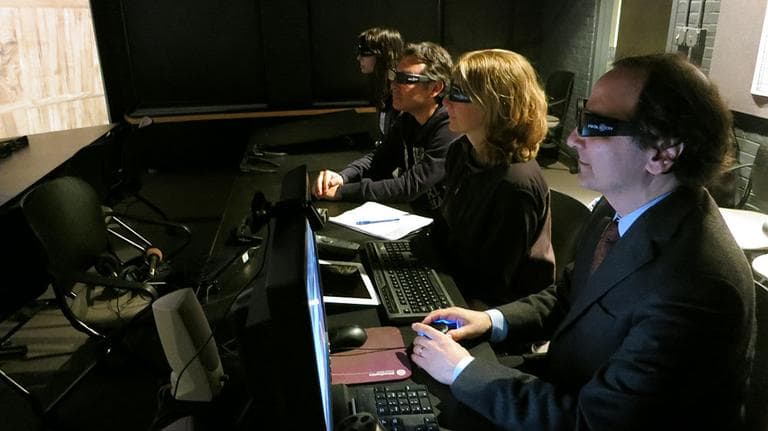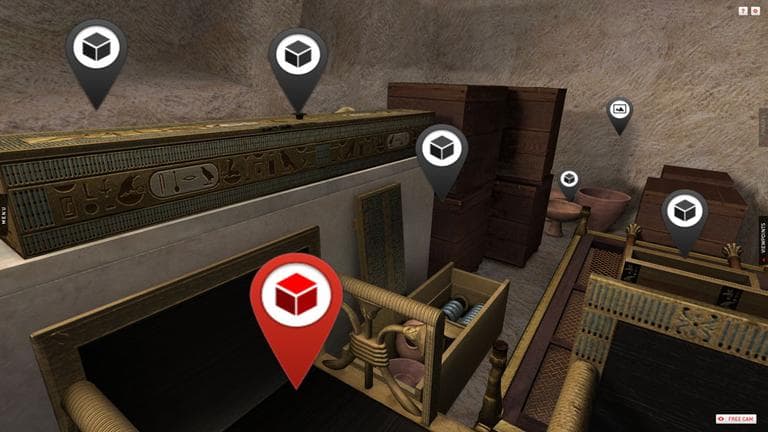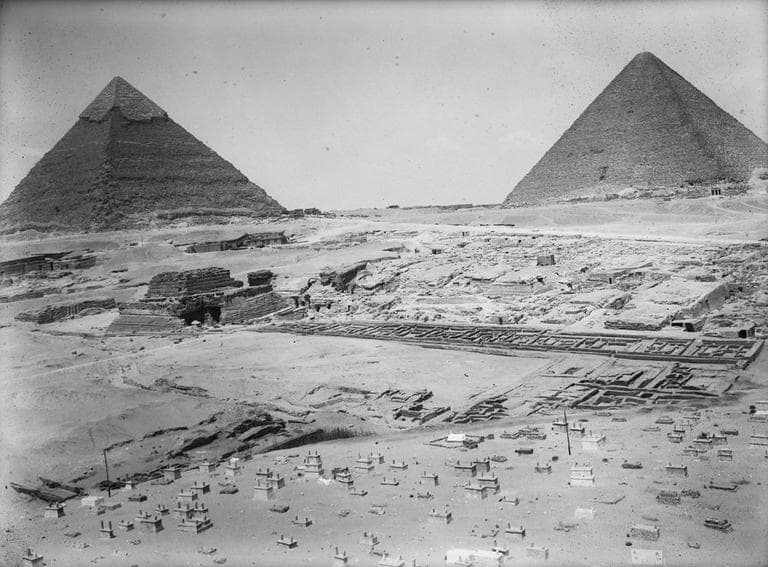Advertisement
Harvard, MFA Unveil Virtual 3D Tour Of Ancient Egyptian Pyramids
Resume
3D has become all the rage in movies and computer games, but the technology isn't just for entertainment. Researchers at Harvard University and the Museum of Fine Arts are turning it into a learning tool, too. Beginning Tuesday, they're offering you a free 3D virtual tour of the ancient pyramids of Egypt.
"I don't play video games," Peter Der Manuelian said with a laugh. "This is as close as I'll ever come, but it's great fun."
Manuelian is one of the brains behind this project, called Giza 3D. He's been fascinated by ancient Egypt ever since fourth-grade history, and he eventually turned that childhood fascination into a profession: he's Harvard's full-time Egyptologist. In a classroom with a curved floor-to-ceiling screen, he gave me some fancy battery-operated 3-D glasses.
"So put the glasses on, and then push the button," he instructed, "and if the image gets a little darker, you'll know that things are working."

And with that, I get a taste of what anyone with an Internet connection and 3D TV will soon be able to experience.
"So what we're seeing, then, is the Great Pyramid and its temples and long causeway, and the sun is going down to the west," Manuelian said.
It's an animated computer rendering of the Giza Plateau, home to the famous pyramids near modern-day Cairo. Manuelian leads our tour with a device that's a cross between a joystick and a mouse.
"I can steer anywhere I want to go," he explained. "So it's not a linear movie or a frozen video, where I start at the beginning and go to the end. We can dive down a burial shaft, we can visit the pyramid."
We start by flying over the whole complex, getting a bird's-eye view. Then we swoop down into a courtyard to see an ancient Egyptian burial ceremony. Suddenly, with a flick of the joystick, we plunge into a long shaft that leads to a burial chamber.

"And I'm going to drive with my mouse and I'll try not to crash into the walls," Manuelian pledged. "And I'll take you down, all the way to the bottom. I hope no one feels seasick!"
It is a little dizzying, and it's all very whiz-bang. But Harvard and the MFA insist this has an educational purpose, too: it's linked to the Giza Archive Project, a massive digital database of materials gathered during a decades-long joint Harvard-MFA expedition of the Giza Plateau. So you can click on anything you come across — say, a tomb — and immediately access all that digitized information.
"Lists of statues, ceramics, objects of daily life from that tomb, references to scholarly publications, maps and plans, old photographs, even unpublished manuscripts," Manuelian reeled off.
This kind of "edu-tourism" has the potential to bring ancient Egypt to the masses, he said. A French software company with U.S. headquarters in Waltham, Dassault Systemes, is behind this technology. One of its vice presidents, Mehdi Tayoubi, called the Giza 3D project the "democratization" of a high-tech tool.
"When a student is here, it's like he's in Giza traveling with Peter as a guide," Tayoubi said. "But back at home, he's able to connect online and to do the travel by himself and to look at some details not raised by Peter during his course," Tayoubi said.
And when Giza 3D goes public Tuesday, you might be able to pay a virtual visit to ancient Egypt, too.
The site will go live early Tuesday morning.
This program aired on May 7, 2012.